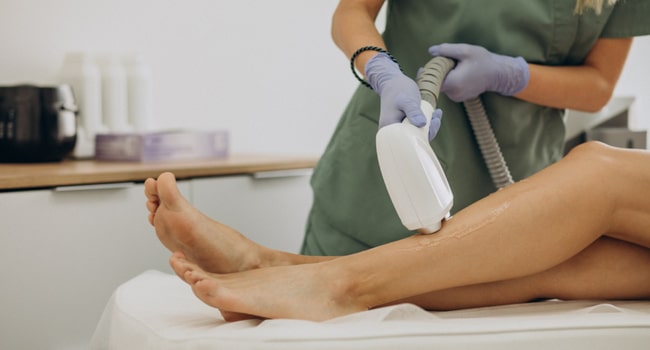Smooth, hair-free skin is a coveted ideal for many, but traditional hair removal methods like shaving, waxing, and plucking can be time-consuming, painful, and often result in irritation or ingrown hairs. But thanks to improvements in technology, laser hair removal has become a popular and very effective way to get smooth skin that lasts. In this comprehensive guide, we’ll delve into the science behind laser hair removal, its benefits, how it works, what to expect during treatment, aftercare tips, and much more.
Understanding Laser Hair Removal
When you get laser hair removal, you use focused blasts of light (lasers) to stop hair growth. This stops hair from growing back. It works by selective photothermolysis, which means that the laser’s energy is taken by the pigment in the hair follicle and hurts it while leaving the skin around it unharmed.
Benefits of Laser Hair Removal
One of the best things about laser hair removal is that the effects last a long time. But laser hair removal can stop hair growth for a long time while shaving or waxing only do that for a short time. As more sessions are done, fewer hairs grow back in the treated area, making it easier.
In addition, laser hair removal is accurate and works well. It can target thick, dark hairs only and leave the skin around them unharmed. This means it can be used on the face, legs, arms, waistline, underarms, and other parts of the body.
Getting rid of hair with a laser is also pretty quick and easy. Lessons can last anywhere from a few minutes to an hour, depending on how big the area being treated is.
When you get waxed, you have to wait for your hair to grow back between sessions. With electrolysis, you can have more regular treatment times.
How Laser Hair Removal Works?
Before using a laser to get rid of hair, a trained expert will clean the area and then put on a cooling gel to protect the skin and make the laser work better. The laser will be changed based on the area that needs to be fixed, your skin type, and the color of your hair.
You might feel a little heat or tingling when the laser is turned on because the energy is going to the hair cells. The majority of current laser systems have cooling features that keep the skin’s surface safe and minimize pain.
How many sessions are needed to get the best results depends on things like hair color, thickness, and the area being treated. To successfully target hair follicles at different stages of growth, most people need more than one session, spaced out over a few weeks.
What to Expect During Treatment?
While laser hair removal is generally well-tolerated, you may experience some mild discomfort during the procedure, often described as a snapping or tingling sensation. However, this discomfort is usually brief and can be minimized with topical numbing creams or cooling devices.
You might see some heat or swelling in the treated area after each session, but it should go away in a few hours to a few days. To avoid discomfort and problems, it’s important to stay out of the sun and not use harsh skin care products right after treatment.
Aftercare Tips
Proper aftercare is crucial to maximizing the results of laser hair removal and minimizing any potential side effects. Here are some essential aftercare tips to follow:
Avoid sun exposure: For at least two weeks after the treatment, keep the area out of direct sunlight and tanning beds. When you’re outside, use sunscreen with a high SPF and wear clothes that will protect you.
Moisturize regularly: Keep the skin hydrated with gentle, fragrance-free moisturizers to soothe any redness or dryness.
Avoid harsh treatments: Refrain from using exfoliating scrubs, harsh chemicals, or other abrasive skincare products on the treated area for at least a week following treatment.
Follow the recommended treatment schedule: Be consistent with your scheduled treatment sessions to achieve the best results. Missing sessions or prolonging the intervals between treatments can compromise the efficacy of the procedure.
Communicate with your technician: If you experience any unexpected side effects or have concerns about your treatment, don’t hesitate to reach out to your laser technician or dermatologist for guidance and support.
Conclusion
A laser can remove hair from the face in a way that is safe, effective and lasts a long time. What to expect during treatment and how to take care of yourself afterward are important things to know about laser hair removal. This way, you can get the most out of it and avoid the trouble of other hair removal methods. If you’re thinking about laser hair removal, talk to a qualified professional to make sure it’s the right choice for you. Then, start your road to clear, smooth skin.
